
The Weapon Shops of Isher – Thrilling Wonder Stories (1951)
Gawker filed for Chapter 11 bankruptcy to avoid paying the bond which would otherwise be necessary to appeal the $140 million judgment against them in the Hulk Hogan sex tape lawsuit. (It’s a good thing I don’t have to explain that sentence to a time traveler from the last century — would take a long time.) There have been plenty of stories and hot takes on it, so I’ll reach back to discuss what the real problem is — the cost of justice is too damn high.
Meanwhile, the Orlando massacre has been used opportunistically to try to re-open the gun control debate, with Administration and Democratic efforts aimed at diverting outrage from Islamist terrorism to domestic political targets.
A. E. van Vogt’s classic science fiction novel The Weapon Shops of Isher (1951) commented on both issues: the lack of practical access to justice in an increasingly corporate-dominated imperial society and the value of the right to bear arms as a counterweight to a domineering government. While the novel was by today’s standards not very well written, it exploded with ideas and commentary on a corrupt society and individual rights of defense and access to justice for the private citizen. From a review by Jayme Lynn Blaschke:
…[T]he Weapon Shops’ credo could be adopted by the gun lobby today without much fuss: “The right to buy weapons is the right to be free.”
Thousands of years from now, humanity is locked into the solar system, having colonized the planets but able to get no farther without faster-than-light technology. The solar system is held tightly in the iron grip of the Empire of Isher, currently headed up by the young, arrogant and impulsive Empress Innelda. The Empire itself is, however, dysfunctional at best, riddled with graft and corruption. Corporations run rampant, pulling scams and illegal takeovers left and right, gouging the helpless citizenry and government agency alike — no matter that most corporations are owned either wholly or in part by that same government. Enter the Weapon Shops… ready and willing so sell all manner of destructive power dirt cheap to the people who want it. And what power it is! Guns that instantaneously teleport to the owner’s hand with a thought, casting up defensive screens that protect the wielder from any and all power the Empire can bring to bear.
There’s a catch, though. Soldiers, government agents and others in the service of the Empress are not allowed entrance to the shops, much less the ability to buy weapons. Likewise, no one with malice towards the shops and their makers are allowed access either. And just to make sure a “Saturday Night Special” factor never comes into play, the fantastic weapons can only be used for hunting, self-defense or suicide. When turned against another human being or used for crime they will not function. If only the same could be said of today’s street level arsenals!
Today’s United States resembles the Empire of Isher more than a little — a relatively prosperous population, but with layer upon layer of accreted law, regulation, and bureaucracy, with ideals of justice corrupted in practice so that only the wealthiest can afford government-sanctioned courts. Everyone else — even a wealthy and famous citizen like “Hulk Hogan” (real name Terry Bollea) — has to appeal to some organization or government agency for relief. Hogan’s sex tape lawsuit against muckraking new media giant Gawker could not have gone forward without secret financing from billionaire Peter Thiel, who is said to have kicked in $10 million to finance this and other lawsuits against Gawker. As Thiel told the New York Times:
Mr. Thiel added: “I can defend myself. Most of the people they attack are not people in my category. They usually attack less prominent, far less wealthy people that simply can’t defend themselves.” He said that “even someone like Terry Bollea who is a millionaire and famous and a successful person didn’t quite have the resources to do this alone.”
Mr. Thiel said that he had decided several years ago to set his plan in motion. “I didn’t really want to do anything,” he said. “I thought it would do more harm to me than good. One of my friends convinced me that if I didn’t do something, nobody would.”
Mr. Thiel has donated money to the Committee to Protect Journalists and has often talked about protecting freedom of speech. He said he did not believe his actions were contradictory. “I refuse to believe that journalism means massive privacy violations,” he said. “I think much more highly of journalists than that. It’s precisely because I respect journalists that I do not believe they are endangered by fighting back against Gawker.”
Plenty of ink has been spilled on this verdict, mostly by writers for publications afraid that billionaires will crush media outlets that dare to offend them. But the real problem highlighted is the lack of justice for everyone else. Gawker had already willfully trampled on the privacy rights of hundreds of citizens in a manner that might easily have resulted in damage awards had any of those victims had the financial resources to pursue claims against it in the court system. But none did, and the abuse of privacy and copyright by clickbait publications like Gawker had become a highly-profitable industry, selling ads for thousands of articles that more responsible media would not have touched for legal reasons.
This is not unlike the “tragedy of the commons” seen in junk calling — a small burden on every phone customer converted to big bucks for the junk callers through mass violation of both good manners and the Do Not Call Registry law. And similarly, there is a call for government regulation — to create an agency to get justice for the little guy when the court system is impractical. In Britain, schemes to create arbitration agencies that would reduce costs to all parties in defamation complaints are being discussed, with the goal of allowing people of more modest means to pursue valid complaints while reducing costs to the press. In the US, there is no similar movement, although anti-SLAPP (Strategic Lawsuit Against Public Participation) laws exist in some states to allow targets of lawsuits by well-funded interests to have them dismissed more easily — but there is still little assistance for either plaintiffs or defendants in civil court.
In civil cases, most individuals are forced to represent themselves, as in this case from “We don’t need fewer lawyers. We need cheaper ones,” an article by Martha Bergmark of Voices for Civil Justice:
Unable to afford representation, more Americans are going to court alone, and they’re losing. In 2014, a Louisiana woman, J., landed in court after a dispute with her landlord over a $25 parking fee. J., 52, was suffering from cancer and did not have an attorney. The court ruled against her and ordered her to vacate her home within 24 hours.
J.’s case, which was later taken on by Southeast Louisiana Legal Services, sounds extreme, but for someone who can’t afford legal counsel, the outcome isn’t surprising. The sad reality is that many Americans facing the loss of a home, family or livelihood are going it alone in civil court, and they’re losing.
In well over two-thirds of critical cases in America’s civil courts, people appear without a lawyer, even though the stakes are often just as high as in criminal proceedings. Many people suffer crushing losses in court not because they’ve done something wrong, but simply because they don’t have legal help….
In 70 to 98 percent of cases in America’s civil courts today, one or both parties are not represented by a lawyer. One report found that civil legal aid programs must turn away almost two-thirds of the people who seek their assistance in critical civil cases, despite research showing that in many such cases, access to legal help makes all the difference. In evictions, for example, two-thirds of tenants who go to court without a lawyer lose their homes, while two-thirds of those represented by an attorney are able to keep them. In complex areas of the law, legal help is essential to enable people to understand and defend their rights. But legal help has become so expensive — about $200 to $300 an hour on average and drastically higher at the largest law firms – that it’s unaffordable, not just for those struggling to make ends meet, but even for most middle-class Americans.
There have been some efforts at reform in civil courts. CLASP (Center for Law and Social Policy) outlines the civic legal aid system and some efforts to assist defendents representing themselves in court:
Civil legal aid in the United States is provided by a large number of
separate and independent staff-based service providers funded by a variety of sources. The
current overall funding is approximately $1.34 billion. The largest element of the civil legal aid
system is comprised of the 134 programs that are funded and monitored by LSC…. there are a variety of other sources, including local governments, other federal government sources, the private bar, United Way, and private foundations.
Over the last 12 years, the civil legal aid system has begun in earnest to utilize innovations in technology to improve and expand access to the civil justice system. As a result, low-income persons have access to information about legal rights and responsibilities and about the options and services available to solve their legal problems, protect their legal rights, and promote their legal interests. Technological innovation in virtually all states has led to the creation of Web sites that offer community legal education information, pro se legal assistance, and other information about the courts and social services. Most legal aid programs now have Web sites with over 300 sites.
All states have a statewide website, most of which also contain information useful both to advocates and clients. Most of these statewide web sites were made possible by the Technology Initiative Grants program of LSC. All of these state sites can be accessed through http://www.lawhelp.org. Half of the sites are hosted on one platform operated by Pro Bono net. Dozens of national sites provide substantive legal information to advocates; other national sites support delivery, management, and technology functions. Many program, statewide, and national websites are using cutting-edge software and offering extensive functionality. I-CAN projects in many states use kiosks with touch-screen computers that allow clients to produce court-ready pleadings and access to other services, such as help with filing for the Earned Income Tax Credit. Video conferencing is being used in Montana and other states to connect clients in remote locations with local courthouses and legal services attorneys.
In criminal cases, indigent defendants are appointed counsel from a public defender’s office, usually an agency of the state. These attorneys are of uneven quality and assigned too many cases, often resulting in less-than-adequate defenses for the poor who rely on them. Then other non-profit organizations sue the states for providing insufficient resources for public defenders, and the game is on — more lawyers contend to paper over the real problem of a costly and antiquated justice system by calling for more tax money instead of reforming the system’s processes to save money by using new technologies and streamlined procedures. The same phenomenon has left us with failed urban schools at very high cost, and inflated costs and lowered quality in every government-run or heavily-regulated service. This absurdity reaches its peak in California’s death penalty expenses — prosecution in a death penalty case costs about $1.1 million more than a similar life sentence case, and the state pays $90 thousand yearly per death row inmate in incarceration costs, plus another $85 thousand yearly in public defender costs to deal with ongoing mandatory appeals. Legislators and judges created a slow and complex process, then both prosecution and defense attorneys are funded with taxpayer money — justice is delayed for decades and both victim’s families and perpetrators get no closure.
Alternative dispute resolution methods — including regulatory agencies, class-action entrepreneurs, and binding arbitration of consumer disputes — have been created to deal with the impracticality of enforcing the law and contracts via the court system. None of these are entirely satisfactory.
Regulatory agencies like insurance commissions, banking regulators, and the alphabet Federal agencies (FTC, FDA, EEOC, DoL, etc.) tend to be captured by the industry they regulate, and the revolving door providing cushy lobbying jobs for retired regulators gives them an incentive to rule for the most powerful. These agencies can perform a valuable role in mediating and screening out groundless complaints, but the higher the level of government they operate at and the larger the industry revenues involved, the less likely they are to be approachable and helpful for average consumers. State-level health insurance regulators, for example, vary widely in quality, but in many cases went to bat for consumers to rectify the worst health insurance company abuses, while the Federal takeover of individual health insurance markets via the ACA has left consumers with limited choices. State insurance regulators dare not threaten the few companies remaining in many markets with loss of their licenses.
Class-action lawsuits combine the small grievances of many consumers into one lawsuit against offenders. This is called “mass tort litigation” or “multi-district litigation” (“MDL”). While these suits can result in effective punishment for egregious mass violations of law or contract, more commonly they are settled by big companies regardless of actual guilt as a cost of doing business, and they have created an ecosystem of law firms that extort settlements returning little to the injured and enriching primarily the law firms involved. Judges will occasionally push back when the attorneys from both sides fail to propose much of a return to the supposedly injured parties, but more commonly will accept a token effort while most of the settlement goes to fund the lawyers involved. Elizabeth Chamblee Burch of the law school at U Georgia comments on recent trends in MDL settlements which show widespread self-dealing by plaintiff attorneys:
I’ve spent the better part of the past year and a half analyzing the publicly available nonclass aggregate settlements that have taken place in multidistrict litigation alongside leadership appointments, common-benefit fees, and, where available, recovery to the plaintiffs. This has given me an in-depth look at what’s happening (or has happened) in Propulsid, Vioxx, Yasmin/Yaz, DePuy ASR Hip Implant, Fosamax (2243), American Medical Systems pelvic mesh litigation, Biomet, NuvaRing, and Actos…. This endeavor has been deeply unsettling for a variety of ethical, doctrinal, and systemic reasons…. I had no idea how widespread the problems were or how they had evolved over time from deal to deal until now.
Propulsid appears to be the primogenitor, for all subsequent deals in the data replicated some aspect of its closure provisions. But Propulsid is extraordinarily troubling: 6,012 plaintiffs abandoned their right to sue in court in favor of settling. Only 37 of them (0.6 percent) recovered any settlement money through the physician-controlled claims review process, receiving little more than $6.5 million in total. Lead lawyers, on the other hand, received over $27 million in common-benefit fees through a deal they negotiated directly with the defendant (and had the court approve). Sadly, that’s just the tip of the iceberg…. [R]epeat players on both sides continually achieve their goals in tandem — defendants end massive suits and lead plaintiffs’ lawyers increase their common-benefit fees. But this exchange may result in lower payouts to plaintiffs, stricter evidentiary burdens in claims processing, or higher plaintiff-participation requirements in master settlements.
Even worse is the collusion of tort bar attorneys with state Attorneys General to target entire industries for shakedowns. The first major example was the 1998 Tobacco Master Settlement, where many states and law firms cooperated to extract $billions from tobacco firms, then tried to limit new entrants into the cigarette industry to allow the settling companies to extract enough revenue from addicted smokers to pay the hefty settlement fees. Currently, a similar effort (conspiracy?) is underway to target oil companies and dissenting voices for their failure to warn investors and citizens about the risks of climate change.
So not only is justice through the courts too costly for all but the wealthiest individuals, the system can be systematically abused to extract rents from targeted groups, unjustly enriching certain attorneys and furthering political corruption.
Binding arbitration clauses now appear in most contracts between consumers and businesses. This protects the business against tort bar extortion while in theory allowing a low-cost, streamlined adjudication of consumer claims. The Federal Arbitration Act outlines conditions allowing mandatory arbitration clauses in contracts to supersede class action or other lawsuits in US and most state courts. This was most recently upheld when the Supreme Court overruled a state court ruling and disallowed a class action lawsuit against DirecTV in California:
The decision is consistent with a series of rulings in recent years that have given corporations a legal way to bypass the courts. Company lawyers say arbitration can be a faster, less expensive and fairer way to resolve disputes.
Consumer-rights advocates and plaintiffs lawyers mostly disagree. They say that many consumer complaints, including over unexpected charges and fees, are too small to justify someone going through an arbitration hearing. The DirecTV fee, for example, could be as high as $480. If consumers cannot join a class-action suit, such complaints will go unheard, advocates say.
“This is another troubling day for American consumers who are ripped off by corporate greed and malfeasance, whether it’s a satellite TV system that doesn’t work, unlawful credit card fees or a defective vehicle,” said Harvey Rosenfield, founder of Consumer Watchdog, and one of the lawyers who represented consumers in the litigation. “The Supreme Court has taken away Americans’ only right to obtain justice: their day in court.”
Of course it is also impractical for consumers to individually dispute corporate actions in court, and the real skirmish here is between class-action lawyers (who want more of a cut in the settlement proceeds) and the companies who prefer arbitration (who want lower costs and predictable remedies.) Even arbitration is impractical for small consumer injuries — which is why the remedy of taking one’s business elsewhere is so important, and why use of regulation to limit consumer choice and prop up monopolies in utility and telecomm sectors is so damaging to consumers, who end up paying more and have little recourse for bad service and abusive charges. And while it’s true arbitration schemes will often favor the big firms who select the arbitration agencies and pay the costs, the tort bar and big companies also cooperate to reach settlements that favor them jointly and neglect compensation for the injured parties.
The impractically-high cost of the court system has been a problem for decades. As early as 1983, thoughtful observers in a New York Times story worried that courts were too costly and were accessible only to the wealthy, and that the burden of slow and complex litigation was too great:
Experts as diverse as Chief Justice Warren E. Burger, Attorney General William French Smith, Griffin B. Bell, the Attorney General in the Carter Administration, and Derek Bok, the president of Harvard University and former dean of the Harvard Law School, argue that the country suffers from too many laws, too many lawsuits, too many legal entanglements and, at least in Mr. Bok’s view, too many lawyers.
While such complaints are not new, they are being voiced with increasing urgency by many pillars of the legal establishment as well as by outside critics.
In his most recent of many complaints about the Supreme Court’s swollen caseload, a May 17 speech to the American Law Institute, Chief Justice Burger declared that the nation was plagued “with an almost irrational focus — virtually a mania – on litigation as a way to solve all problems.”
Mr. Bok, in his annual report to the Board of Overseers of Harvard College, said the United States had “developed a legal system that is the most expensive in the world yet cannot manage to protect the rights of most of its citizens.”
Warnings about increased litigiousness alternate with expressions of concern that most citizens cannot afford to hire lawyers to press legitimate claims and defenses against, for example, landlords and creditors.
Lloyd N. Cutler, one of Washington’s most prominent corporate lawyers, has written of large law firms like his own: “The rich who pay our fees are less than 1 percent of our fellow citizens, but they get at least 95 percent of our time. The disadvantaged we serve for nothing are perhaps 20 to 25 percent of the population and get at most 5 percent of our time. The remaining 75 percent cannot afford to consult us and get virtually none of our time.”
Thomas Ehrlich, a former head of the Federal program of legal assistance to poor people and now provost of the University of Pennsylvania, says that because “private wealth is the primary criterion for access to the legal system,” justice often eludes the poor.
But Mr. Bok stresses that “the wealthy and the powerful also chafe under the burden” of regulations, delays, legal uncertainties and manipulations. Some landlords, for example, complain that federally subsidized legal aid lawyers use technicalities to help poor tenants avoid eviction while they refuse to pay rent.
The chorus of concern about justice in America masks great diversity in the views of the critics, whose diagnoses often reflect opposing political views and whose prescriptions for reform often conflict.
For example, the contention by Chief Justice Burger and others that the legal system is being overwhelmed by excessive litigiousness has been questioned by scholars and others who are wary of any proposals to make it harder for individuals to bring lawsuits.
Marc Galanter, a University of Wisconsin law professor specializing in social research on the legal system, says overblown rhetoric about the increase in litigation distracts attention from more severe problems, such as the undue complexity that makes the system so costly and incomprehensible to lay people.
But reform efforts were intermittent, and overwhelmed by the incentives in the system to pass increasingly long and complex laws authorizing agencies to write even more regulations to micromanage every aspect of life. Improvement in some areas, like limitations on tort liability damage awards and increasing use of private arbitration in commercial contracts, were more than countered by production of new and more complex regulations by a bureaucracy needing to keep its staff busy by identifying more targets to regulate. Thirty-odd years later, the problem is worse, and the sense of powerlessness against monopoly services, schools, and governments has reached the boiling point.
Businesses are weighed down by the costs of litigation and the efforts to forestall it, like those undecipherable product manuals heavy with warnings meant to defend against lawsuits. Liability costs in the US are much higher than in most competitive countries. This chart from the US Chamber of Commerce’s Institute for Legal Reform’s June 2013 update “International Comparisons of Legal Costs” shows comparative costs as a percent of GNP for the US versus Europe:

Liability Costs, US vs Europe — Institute for Legal Reform
The “Litigation Cost Survey of Major Companies,” a statement submitted by Lawyers for Civil Justice to the 2010 Conference on Civil Litigation, cited the outsized cost of liitigation to US companies:
Rule 1 of the Federal Rules of Civil Procedure frames the purpose of the Rules: “the just, speedy and inexpensive determination of every action and proceeding.” Every day, corporate and defense counsel must confront the fact that although well‐intentioned, the Rules are falling far short of this goal. The reality is that the high transaction costs of litigation, and in particular the costs of discovery, threaten to exceed the amount at issue in all but the largest cases….
Key Survey Findings
Litigation costs continue to rise and are consuming an increasing percentage of corporate revenue. Litigation transaction costs on average and as a percent of revenue have risen substantially over the past nine years. The amounts of judgments and settlements are not included in these figures.
• The average outside litigation cost per respondent was nearly $115 million in 2008, up 73
percent from $66 million in 2000. This represents an average increase of 9 percent each year.
• For the 20 companies providing data on this issue for the full survey period, average outside
litigation costs were $140 million in 2008, an increase of 112 percent from $66 million in 2000.
• Between 2000 and 2008, average annual litigation costs as a percent of revenues increased 78
percent for the 14 companies providing data on average litigation costs as a percent of
revenues for the full survey period.
• Increases in hourly rates do not appear to be driving the increase in litigation costs, as the
available data show relatively little change in outside legal fees over time.
The U.S. litigation system imposes a much greater cost burden on companies than systems outside the United States. As a percent of revenue, multi‐national company respondents to the survey spend a disproportionate amount on litigation in the United States relative to their expenditures in foreign jurisdictions. Depending on the year, relative U.S. costs were between four and nine times higher than non‐U.S. costs (as a percent of revenue). This disparity will inevitably influence decisions by corporations about where to invest their resources. Global competition for foreign investment is increasing, and the changing dynamics of the global economy are affecting the United States’ ability to remain a leader in this area. The International Trade Administration at the U.S. Department of Commerce has found that “many foreign investors view the U.S. legal environment as a liability when investing in the United States.”
What could improve this situation? Streamlined courts using modern technology to gather facts and judge cases. Smart contracts and online arbitration services for smaller cases. A thorough overhaul of the antiquated and expensive court system with its well-paid lawyers and staff to improve productivity and speed while lowering costs. Simplification of laws and a pruning of regulatory agencies to the minimum required to maintain a just society would also help.
The Weapon Shops of A. E. van Vogt’s novel were a long-lasting counterweight to oppressive governments, providing both smart weapons and low-cost courts. When written in 1951, smart guns and AI judges were far-future ideas, but real versions of both are likely in the near future. Current smart weapons are still impractical and too unreliable and complex for acceptance (when seconds count, do you want to find out your gun’s batteries have died?) but it won’t be long before personal weapons usable only by the owner and smart enough to detect improper use become available.
The book’s view of a complex society saved from tyranny by multiple power centers and the accessibility of both personal defense weapons and low-cost courts is more relevant now than when it was written. A few excerpts — first, a naive shop owner discovers how little he can do when he has been treated badly by a bank and tries to represent himself in court:
His high sense of duty rightly done lasted until mid-afternoon, when the bailiff from Ferd came to take over the shop.
“But what—” Fara began.
The bailiff said, “The Automatic Atomic Motor Repair Shops, Limited, took over your loan from the bank and are foreclosing.”
“It’s unfair,” said Fara. “I’ll take it to court.” He was thinking dazedly: If the empress ever learned of this, she’d… she’d–
The courthouse was a big, gray building; and Fara felt emptier and colder every second, as he walked along the gray corridors. In Glay, his decision not to give himself into the hands of a lawyer had seemed a wise act. Here, in these enormous halls and palatial rooms, it seemed the sheerest folly.
He managed, nevertheless, to give an account of the criminal act of the bank in first [loaning] the money, then turning over the note to his chief competitor, apparently within minutes of his signing it. He finished with, “I’m sure, sir, the empress would not approve of such goings-on against honest citizens.”
“How dare you,” said the cold-voiced person on the bench, “use the name of Her Holy Majesty in support of your own gross self-interest?”
Fara shivered. The sense of being intimately a member of the empress’s great human family yielded to a sudden chill and a vast mind-picture of the ten million icy courts like this, and the myriad malevolent and heartless men — like this — who stood between the empress and her loyal subject, Fara. He thought passionately: If the empress knew what was happening here, how unjustly he was being treated, she would–
Or would she? He pushed the terrible doubt out of his mind — came out of his reverie with a start, to hear the [judge] saying: “Plaintiff’s appeal dismissed, with costs assessed at seven hundred credits, to be divided between the court and the defense solicitor in the ratio of five to two. See to it that the appellant does not leave until the costs are paid. Next case.”
Fara makes his way to the local Weapon Shop, where he is transported to a different kind of court, and is told to get in line:
The man, a heavy-faced, blue-eyed young chap of around thirty-five, looked at him curiously: “You must know why you’re here,” he said. “Surely, you wouldn’t have been sent through here unless you had a problem of some kind that the Weapon Shop courts will solve for you; there’s no other reason for coming to Information Center.” Fara walked on because he was in the line now, a fast-moving line that curved him inexorably around the machine; and seemed to be heading him toward a door that led into the interior of the great metal structure. So it was a building as well as a machine. A problem, he was thinking, why of course, he had a problem. A hopeless, insoluble, completely tangled problem so deeply rooted in the basic structure of Imperial civilization that the whole world would have to be overturned to make it right. With a start, he saw that he was at the entrance. He thought with awe: In seconds he could be committed irrevocably — to what?
After showing the reader an example of the independent Weapon Shops courts in operation, the author hints that they enforce their judgments by directly taking from the bank accounts of the wrongdoers — the Weapon Shops operate in symbiosis with the government of the day, no matter what its form, by using advanced technology to rebalance the scales of justice. The current government, the Empire of Isher, is run by the willful and arrogant Empress Innelda, who plans to use a new technology to destroy the Weapon Shops and gain full control of her people. Some of her officers, seeing the danger in undermining one of the balancing pillars of Isher society, refuse to participate, and Innelda confronts one officer arrested for desertion:
At half past ten, free of urgent correspondence, she had the officer-deserter brought in. He was a man of thirty-three according to his file, country born and holding the rank of major. He came in; a faint cynical smile on his lips, but his eyes looked depressed. His name was Gile Sanders. Innelda studied him gloomily. According to his file he had three mistresses and had made a fortune out of a peculiar graft involving army purchases. It was a fairly typical case history. And the part that was difficult to understand was why he, who had so much, had given it all up. She asked the question earnestly. “And please,” she said, “do not insult me by suggesting that you were concerned with the moral issue of the war. Tell me simply and plainly why you gave up all your possessions for dishonor and disgrace. In one act you disinherited yourself. The very least that can happen to you is that you’ll be sent to Mars or Venus permanently. Were you a fool or a coward or both?”
He shrugged. “I suppose I was a fool.” His feet fumbled nervously over the floor. His eyes did not evade her direct stare, but his answer left her dissatisfied. After ten minutes she had got no real explanation out of him. It was possible that the profit and loss motivation had not influenced his decision.
She tried a new approach. “According to your file,” she said, “you were notified to report to building eight hundred A and, because of your rank, it was explained to you that at last a method had been found to destroy the weapon shops. An hour later, after having burned your private papers, you left your office and took up residence in a seaside cottage which you had purchased secretly — you thought — five years ago. A week later, when it was clear that you did not intend to do your duty, you were arrested. You have been in close confinement ever since. Is that picture fairly correct?”
The man nodded but said nothing. The empress studied him, biting her lips. “My friend,” she said softly at last, “I have it in my power to make your punishment anything I desire. Anything. Death, banishment, commutation—” she hesitated— “reinstatement.”
Major Sanders sighed wearily. “I know,” he said. “That was the picture I suddenly saw.”
“I don’t understand.” She was puzzled. “If you realize the potentialities of your act, then you were very foolish.”
“The picture,” he said in a monotone, as if he had not heard her interruption, “of a time when someone, not necessarily yourself, would have that power without qualification, without there being anywhere to turn, without alleviation, without — hope.”
She had her answer. “Well, of all the stupidity!” said Innelda explosively. She leaned back in her chair, momentarily overcome, drew a deep breath, then shook her head in irritation. “Major,” she said gently, “I feel sorry for you. Surely your knowledge of the history of my family must have told you that the danger of misuse of power does not exist. The world is too big. As an individual I can interfere in the affairs of such a tiny proportion of the human race that it is ridiculous. Every decree that I issue vanishes into a positive blur of conflicting interpretations as it recedes from me. That decree could be ultimately mild — it would make no difference in the final administration of it. Anything, when applied to eleven billion people, takes on a meaningless quality that is impossible to imagine unless you have studied, as I have, actual results.”
She saw with astonishment that her words had not touched him. She drew back, offended. It was all so crystal clear and here was one more obstinate fool. She restrained her anger with an effort. “Major,” she said, “with the weapon shops out of the way we could introduce steadying laws that could not be flouted. There would be more uniform administration of justice because people would have to accept the judgment of the courts, their only recourse being appeals to the higher courts.”
“Exactly,” said Sanders. That was all. His tone rejected her logic. She studied him for a long moment, all the sympathy gone from her. Then she said bitterly, “If you’re such a firm believer in the Weapon Shops, why didn’t you protect yourself by going to them for a defensive gun?”
“I did.”
She hesitated; then asked coldly, “What was the matter? Did your courage fail you when it came to the point of using it to defend yourself from arrest?” Watching him, she knew she shouldn’t have said that. It left her open to a retort which, she realized, might be devastating. Her fear was justified.
Sanders said, “No, Your Majesty. I did exactly what some of the other — uh — deserters did. I took off my uniform and went to a weapon shop, intending to buy a gun. But the door wouldn’t open. It appears that I am one of the few officers who believe that the Isher family is the more important of the two facets of Isher civilization.” His eyes had been bright as he spoke. Now they grew depressed again. “I am,” he said, “in exactly the position you want to put everybody into. I have no way to turn. I must accept your law; must accept secret declarations of war on an institution that is as much a part of Isher civilization as the House of Isher itself; must accept death if you decree it, without a chance to defend myself in open battle. Your Majesty,” he finished quietly, “I respect and admire you. The officers who deserted are not scoundrels. They were merely confronted with a choice and they chose not to participate in an attack on things as they are. I doubt if I could put it more honestly than that.”
She doubted it too. Here was a man who would never understand the realistic necessity of what she was doing. After she dismissed him she noted his name in her check-file, commenting that she wanted to hear the verdict of his court-martial…. She realized that it was now time to go to the Treasury Department and hear all the reasons why it was impossible to spend more money. With a tired smile, she went out of the study and took a private elevator up to the fiftieth floor.
After writing the Weapon Shops stories, A. E. van Vogt moved to Los Angeles where he met L. Ron Hubbard in 1945 and briefly headed up Hubbard’s Dianetics organization, which later evolved into the Church of Scientology. His interest in overarching meta-systems to explain everything was apparent in his writings, which as a result became less readable. Philip K. Dick cited him as an influence — “Van Vogt influenced me so much because he made me appreciate a mysterious chaotic quality in the universe which is not to be feared.”
The impunity with which Gawker operated for years while stepping on the privacy rights of people for profit is just one symptom of the inability to get justice at a reasonable price. The simmering resentments of citizens made unknowing scofflaws while going about their lives (see Radley Balko’s Reason piece, “We’re All Felons, Now”) and the increasing regulatory overhead to start and run a small business are slowing growth and damaging the careers of young people who have been trained to ask permission before trying anything new.
Meanwhile, the Party of Government, like Empress Innelda, sees only good in its efforts to limit the right of self-defense and increase the revenue and authority of government at every level. They mean well, after all, and this chaos of unmanaged freedom and unregulated commerce must give way to those who know what’s best for all the little people. America was a good idea once, but it’s too dangerous to continue the experiment started in 1776….
—
Walter Olson’s Overlawyered: Chronicling the High Cost of Our Legal System is a good source for news on justice system excesses and the negative side-effects of its high cost.
More reading on other topics:
Update: California High-Speed Rail Nearly Dead
Regulation Strangling Innovation: Planes, Trains, and Hyperloop
Captain America and Progressive Infantilization
The Great Progressive Stagnation vs. Dynamism
FDA Wants More Lung Cancer
Corrupt Feedback Loops: Public Employee Unions
Jane Jacobs’ Monstrous Hybrids: Guardians vs Commerce
Death by HR: How Affirmative Action is Crippling America
Death by HR: The End of Merit in Civil Service
Death by HR: History and Practice of Affirmative Action and the EEOC
Civil Service: Woodrow Wilson’s Progressive Dream
Bootleggers and Baptists
Corrupt Feedback Loops: Justice Dept. Extortion
Corrupt Feedback Loops, Goldman Sachs: More Justice Dept. Extortion
Death by HR: The Birth and Evolution of the HR Department
Death by HR: The Simple Model of Project Labor
Levellers and Redistributionists: The Feudal Underpinnings of Socialism
Sons of Liberty vs. National Front
Trump World: Looking Backward
Minimum Wage: The Parable of the Ladder
Selective Outrage
Culture Wars: Co-Existence Through Limited Government
Social Justice Warriors, Jihadists, and Neo-Nazis: Constructed Identities
Tuitions Inflated, Product Degraded, Student Debts Unsustainable
The Morality of Glamour
On Affirmative Action and Social Policy:
Affirmative Action: Chinese, Indian-Origin Citizens in Malaysia Oppressed
Affirmative Action: Caste Reservation in India
Diversity Hires: Pressure on High Tech<a Title IX Totalitarianism is Gender-Neutral
Public Schools in Poor Districts: For Control Not Education
Real-Life “Hunger Games”: Soft Oppression Destroys the Poor
The Social Decay of Black Neighborhoods (And Yours!)
Child Welfare Ideas: Every Child Gets a Government Guardian!
“Income Inequality” Propaganda is Just Disguised Materialism
Orlando and Elite Bigotry: Come Out as an American
Progressive Displacement and Social Media: Gun Control Edition
The greatest hits from SubstrateWars.com (Science Fiction topics):
Fear is the Mindkiller
Mirror Neurons and Irene Gallo
YA Dystopias vs Heinlein et al: Social Justice Warriors Strike Again
Selective Outrage
Sons of Liberty vs. National Front
“Tomorrowland”: Tragic Misfire
The Death of “Wired”: Hugo Awards Edition
Hugos, Sad Puppies 3, and Direct Knowledge
Selective Outrage and Angry Tribes
Men of Honor vs Victim Culture
SFF, Hugos, Curating the Best
“Why Aren’t There More Women Futurists?”
Science Fiction Fandom and SJW warfare
More reading on the military:
US Military: From No Standing Armies to Permanent Global Power
US Military: The Desegration Experience
The VA Scandals: Death by Bureaucracy



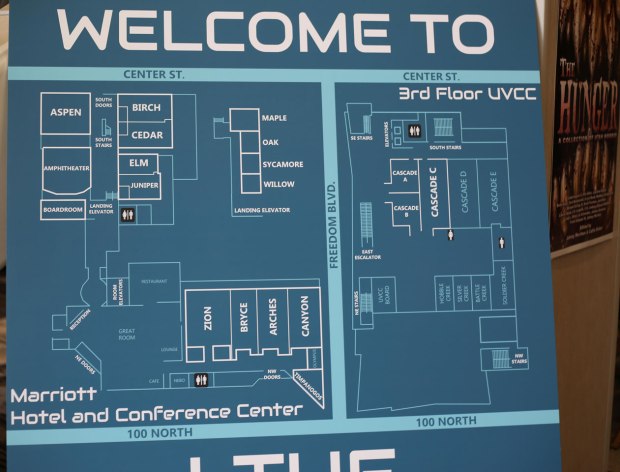






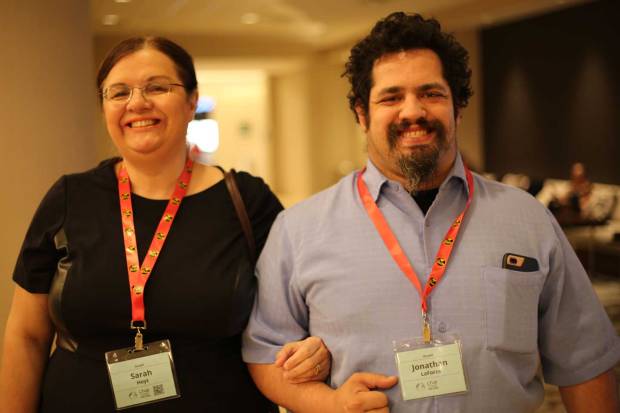
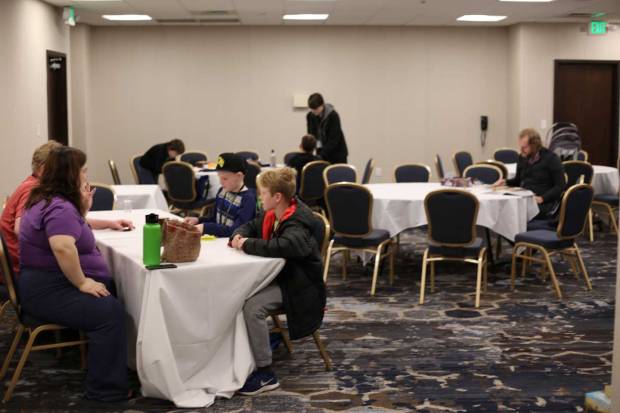
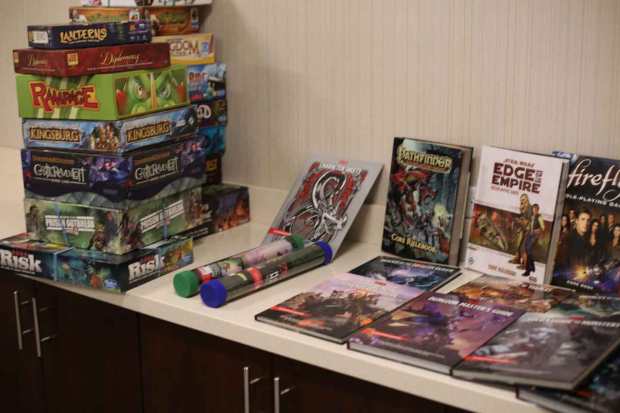




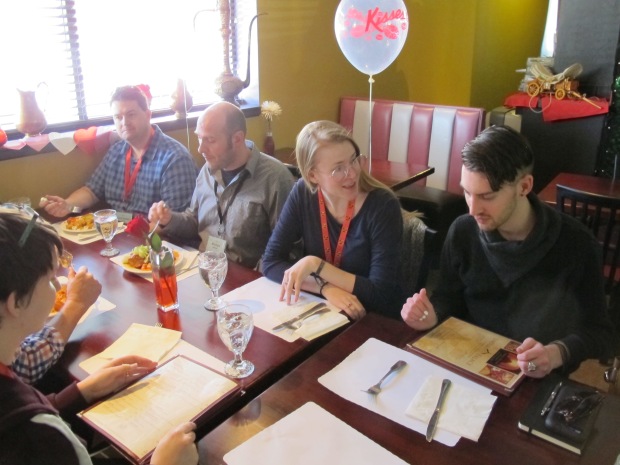
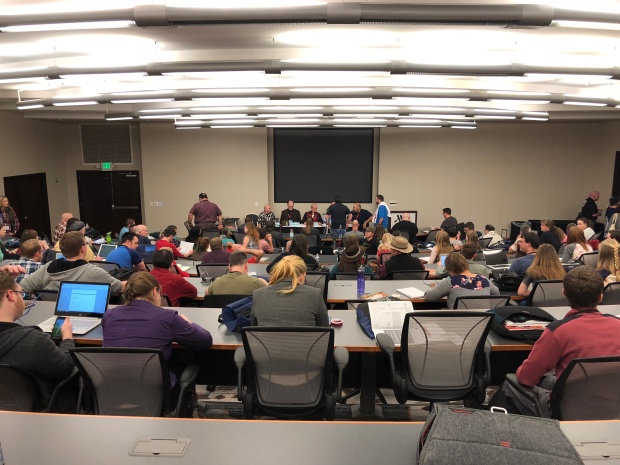

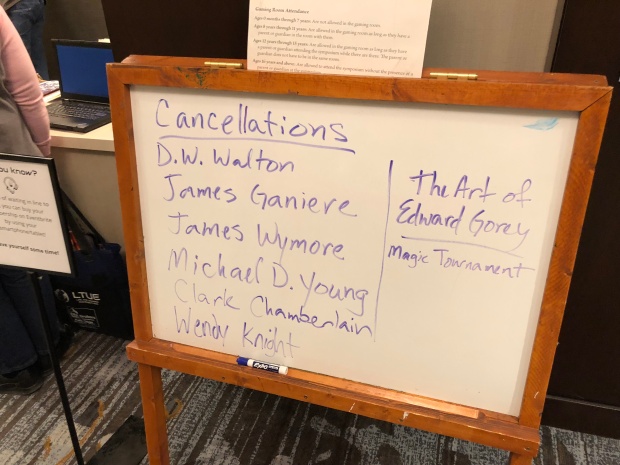

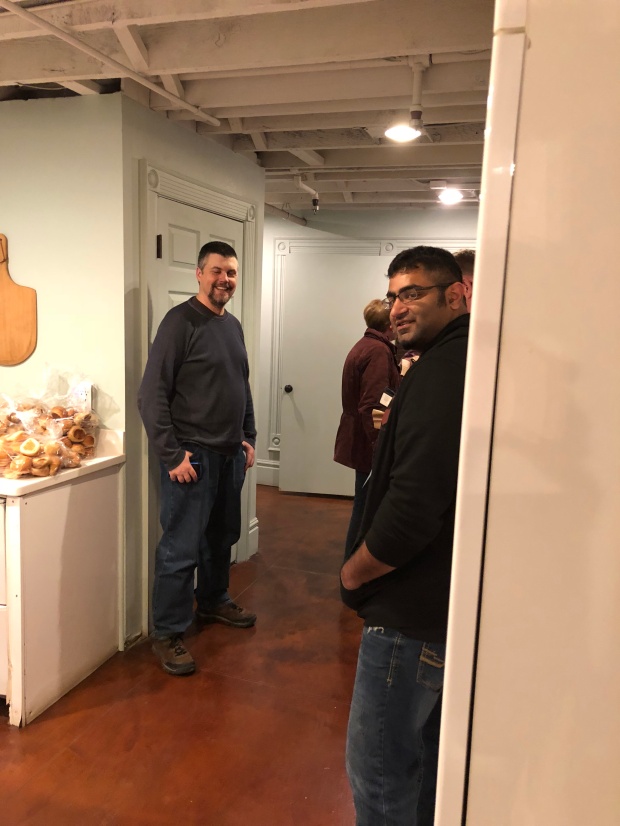
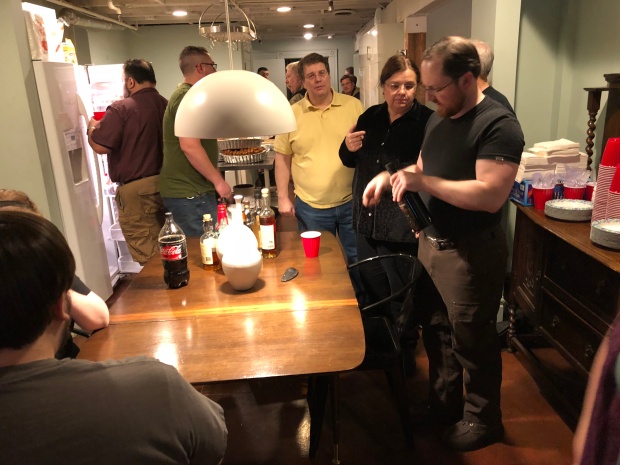

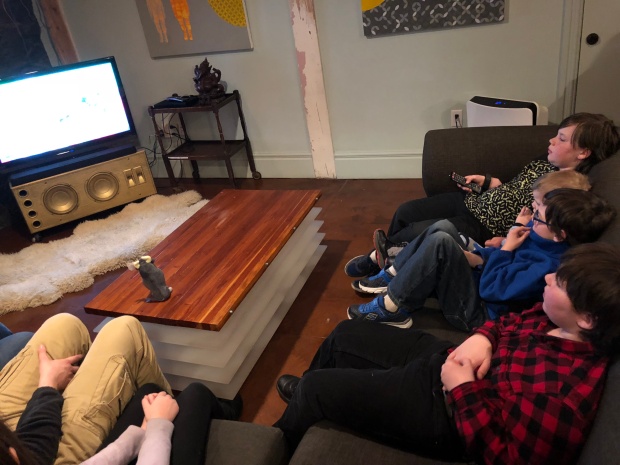





















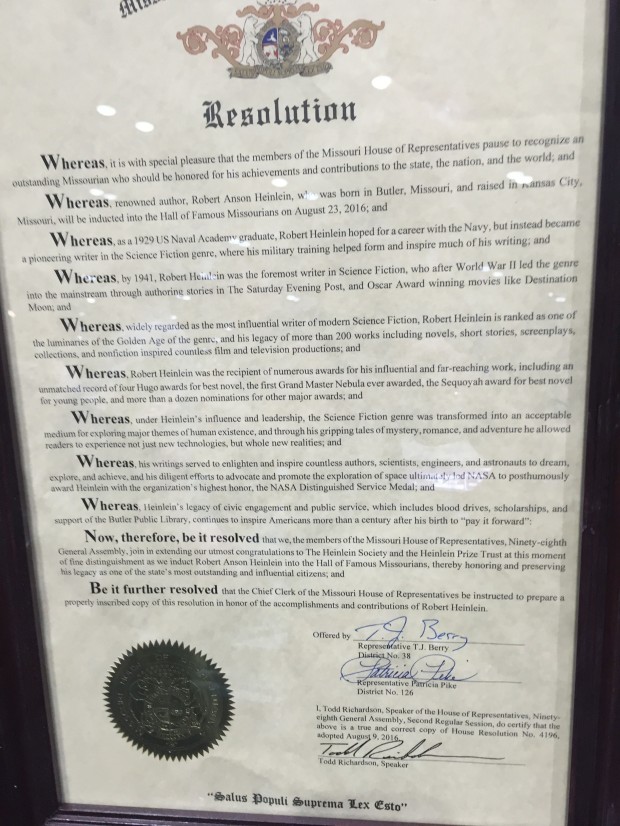







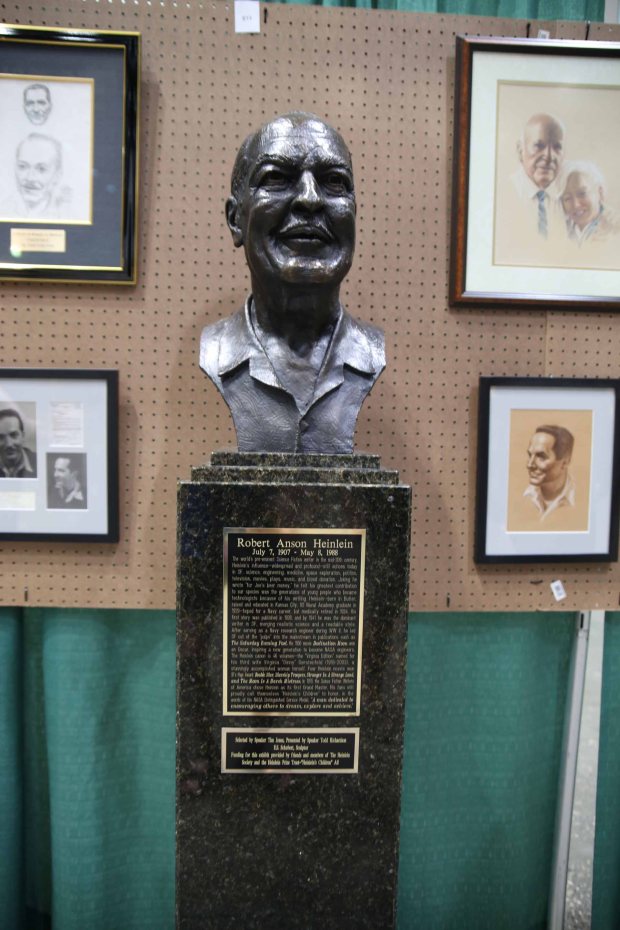
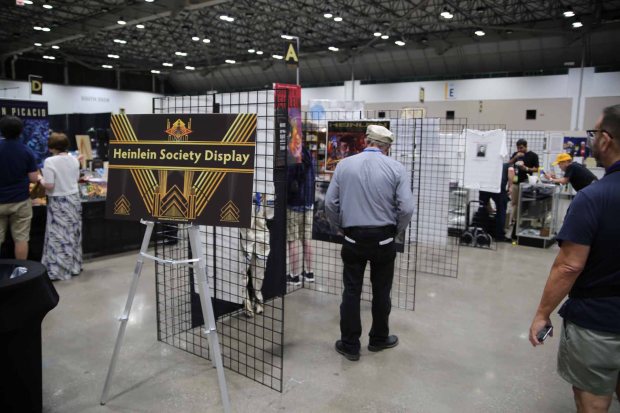




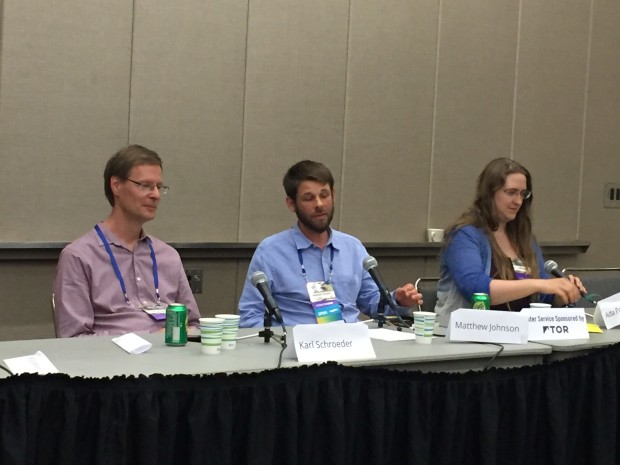

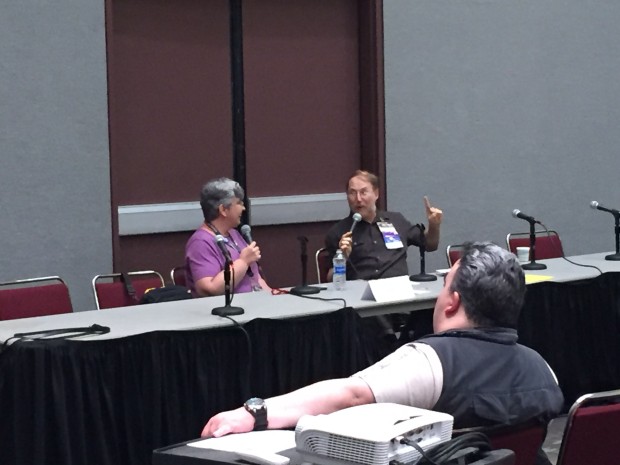





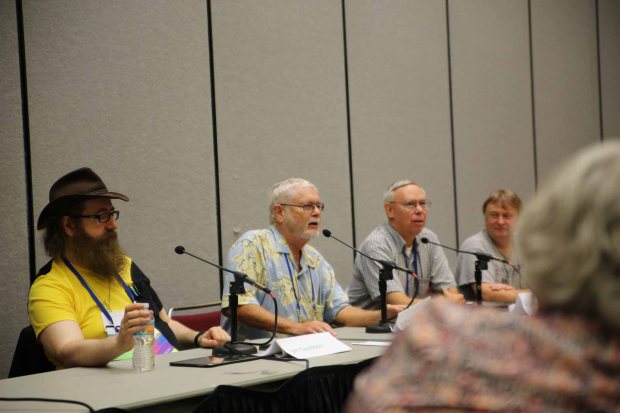


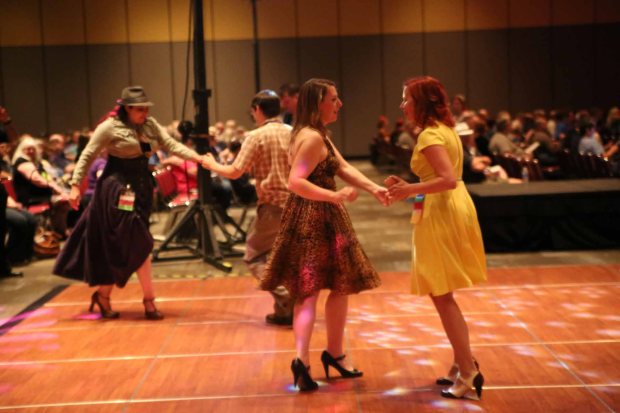












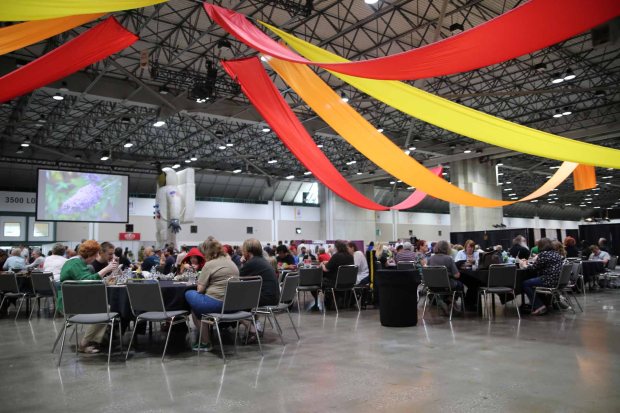







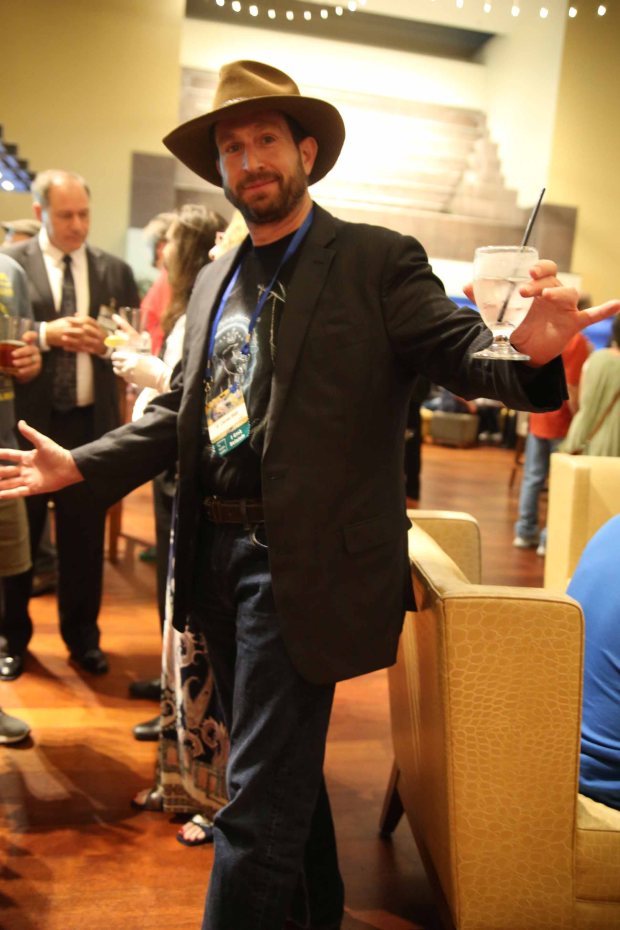
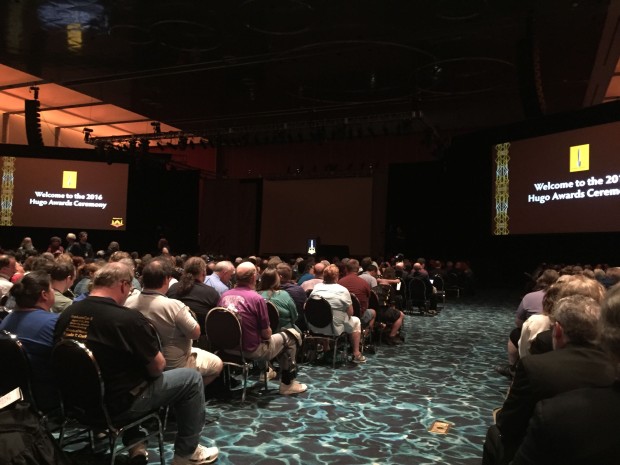
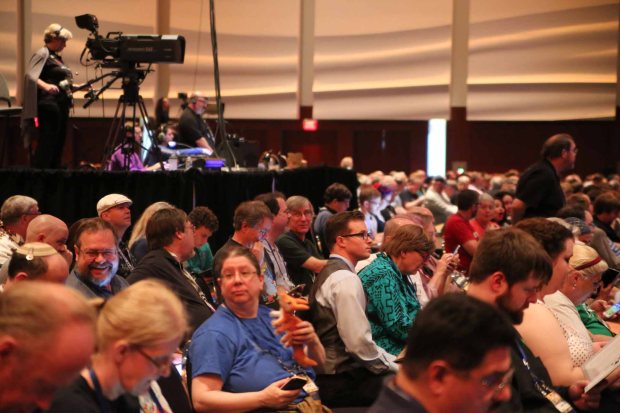















 Death by HR: How Affirmative Action Cripples Organizations
Death by HR: How Affirmative Action Cripples Organizations






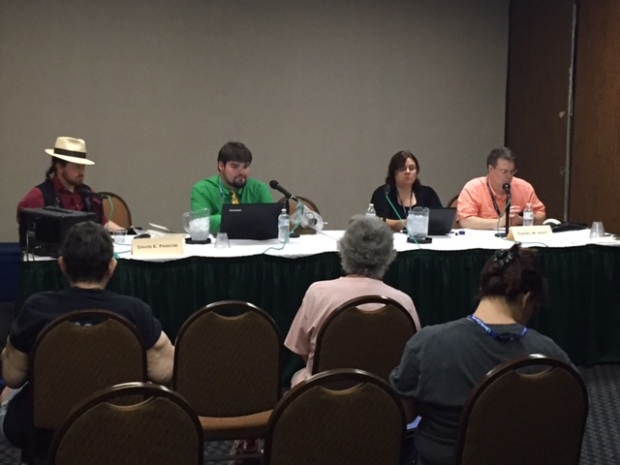






You must be logged in to post a comment.